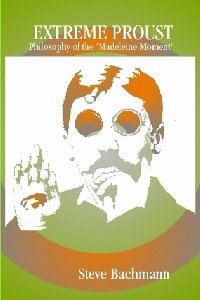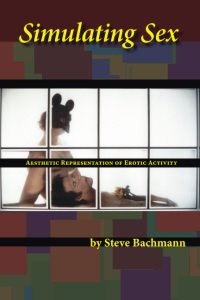April 30, 2008
Albert Hofmann, the Father of LSD, Dies at 102
PARIS — Albert Hofmann, the mystical Swiss chemist who gave the world LSD, the most powerful psychotropic substance known, died Tuesday at his hilltop home near Basel, Switzerland...
Dr. Hofmann was born in Baden, a spa town in northern Switzerland, on Jan. 11, 1906, the eldest of four children. His father, who had no higher education, was a toolmaker in a local factory, and the family lived in a rented apartment. But Dr. Hofmann spent much of his childhood outdoors.
He would wander the hills above the town and play around the ruins of a Hapsburg castle, the Stein. “It was a real paradise up there,” he said in an interview in 2006. “We had no money, but I had a wonderful childhood.”
It was during one of his ambles that he had his epiphany.
“It happened on a May morning — I have forgotten the year — but I can still point to the exact spot where it occurred, on a forest path on Martinsberg above Baden,” he wrote in “LSD: My Problem Child.” “As I strolled through the freshly greened woods filled with bird song and lit up by the morning sun, all at once everything appeared in an uncommonly clear light.
“It shone with the most beautiful radiance, speaking to the heart, as though it wanted to encompass me in its majesty. I was filled with an indescribable sensation of joy, oneness and blissful security.” ...
Dr. Hofmann went on to study chemistry at Zurich University because, he said, he wanted to explore the natural world at the level where energy and elements combine to create life. He earned his Ph.D. there in 1929, when he was just 23. He then took a job with Sandoz Laboratories in Basel, attracted by a program there that sought to synthesize pharmacological compounds from medicinally important plants.
It was during his work on the ergot fungus, which grows in rye kernels, that he stumbled on LSD, accidentally ingesting a trace of the compound one Friday afternoon in April 1943. Soon he experienced an altered state of consciousness similar to the one he had experienced as a child.
On the following Monday, he deliberately swallowed a dose of LSD and rode his bicycle home as the effects of the drug overwhelmed him. That day, April 19, later became memorialized by LSD enthusiasts as “bicycle day.”
Dr. Hofmann’s work produced other important drugs, including methergine, used to treat postpartum hemorrhaging, the leading cause of death from childbirth. But it was LSD that shaped both his career and his spiritual quest.
“Through my LSD experience and my new picture of reality, I became aware of the wonder of creation, the magnificence of nature and of the animal and plant kingdom,” Dr. Hofmann told the psychiatrist Stanislav Grof during an interview in 1984. “I became very sensitive to what will happen to all this and all of us.”
Dr. Hofmann became an impassioned advocate for the environment and argued that LSD, besides being a valuable tool for psychiatry, could be used to awaken a deeper awareness of mankind’s place in nature and help curb society’s ultimately self-destructive degradation of the natural world.
But he was also disturbed by the cavalier use of LSD as a drug for entertainment, arguing that it should be treated in the way that primitive societies treat psychoactive sacred plants, which are ingested with care and spiritual intent.
After his discovery of LSD’s properties, Dr. Hofmann spent years researching sacred plants. With his friend R. Gordon Wasson, he participated in psychedelic rituals with Mazatec shamans in southern Mexico. He succeeded in synthesizing the active compounds in the Psilocybe mexicana mushroom, which he named psilocybin and psilocin. He also isolated the active compound in morning glory seeds, which the Mazatec also used as an intoxicant, and found that its chemical structure was close to that of LSD.
During the psychedelic era, Dr. Hofmann struck up friendships with such outsize personalities as Timothy Leary, Allen Ginsberg and Aldous Huxley, who, nearing death in 1963, asked his wife for an injection of LSD to help him through the final painful throes of throat cancer.
Yet despite his involvement with psychoactive compounds, Dr. Hofmann remained moored in his Swiss chemist identity. He stayed with Sandoz as head of the research department for natural medicines until his retirement in 1971. He wrote more than 100 scientific articles and was the author or co-author of a number of books...
Though Dr. Hofmann called LSD “medicine for the soul,” by 2006 his hallucinogenic days were long behind him, he said in the interview that year.
“I know LSD; I don’t need to take it anymore,” he said, adding. “Maybe when I die, like Aldous Huxley.”
But he said LSD had not affected his understanding of death. In death, he said, “I go back to where I came from, to where I was before I was born, that’s all.”
No sooner had the warm liquid mixed with the crumbs touched my palate than a shiver ran through me and I stopped, intent upon the extraordinary thing that was happening to me. An exquisite pleasure had invaded my senses, something isolated, detached, with no suggestion of its origin. And at once the vicissitudes of life had become indifferent to me, its disasters innocuous, its brevity illusory—this new sensation having had the effect, which love has, of filling me with a precious essence; or rather this essence was not in me, it was me. I had ceased now to feel mediocre, contingent, mortal. Whence could it have come to me, this all-powerful joy? PROUST, IN SEARCH OFLOST TIME(i, 60)
And at the moment when, recovering my balance, I put my foot on a stone which was slightly lower than its neighbor, all my discouragement vanished and in its place was that same happiness which at various epochs of my life had been given to me by the sight of trees which I had thought that I recognized in the course of a drive near Balbec, by the sight of the twin steeples of Martinville, by the flavour of a madeleine dipped in tea, and by all those other sensations of which I have spoken and of which the last works of Vinteuil had seemed to me to combine the quintessential character. Just as, at that moment when I tasted the madeleine, all anxiety about the future, all intellectual doubts had disappeared … The happiness which I had just felt was unquestionably the same as that which I had felt when I tasted the madeleine soaked in tea. ... PROUST, IN SEACH OF LOST TIME, (vi, 255-256)
EXTREME PROUST, §46. Ontology: Chemicals
By this juncture, it should be clear that Proust is not the only person to have concerned himself with “madeleine moments,” although he may be the only artist to have associated a cupcake with ecstatic experience. Poets, writers, painters, philosophers, religious visionaries, and more, all have alluded to versions of rapture comparable to Proust’s madeleine rapture. These ecstasies can come from many fields of human endeavor—e.g., love, sport, work, religion, etc.—although such will always be experienced only at the apex of each field—whether the field be love, sport, work, religion, etc.
Again, these ecstasies are characterized by a disintegration of ordinary experience, indeed, a disintegration of the ordinary sense of self. In ecstasy, the self—such as it exists in ecstasy—enters into direct, unmediated relationships and experiences with the erupting and disrupting content of the ecstasy. After the rapture, the everyday self attempts to reconstitute itself and its ways of engaging everyday reality. The memories of rapture exist in a pale version of the actual experience. Perhaps art can recapitulate it.
While we have come closer to describing Proust’s madeleine moment, we have done little to explain it in terms of what it might actually be. What “is” it? ...
One pioneer who has devoted his life to exploring the chemical bases of these phenomena is Alexander Shulgin. Drake Bennett reports that Shulgin started with Dow Chemical and ended up devoting his life to creating and self-testing psychedelic drugs. Timothy Leary has called him “one of the century’s most important scientists” (34). Apparently Shulgin had an “epiphany” experimenting with mescaline: he concluded that everything he saw and thought
had been brought about by a fraction of a gram of a white solid . . . [Shulgin states:] “I understood that our entire universe is contained in the mind and spirit. We may choose not to find access to it, we may even deny its existence, but it is indeed there inside us, and there are chemicals that can catalyze its availability.” (34)
Among other things, Shulgin has written books called “PiHKAL” and “TiHKAL” (short for “Phenethylamines I Have Known and Loved,” and “Tryptamines I Have Known and Loved,”); he also “fished an obscure chemical called MDMA out of the depths of the chemical literature and introduced it to the wider world, where it came to be known as Ecstasy” (34, 35)....
Ecstasy is another outstanding trait of lovers. This, too, appears to be associated with dopamine. Elevated concentrations of dopamine in the brain produce exhilaration, as well as many of the other feelings that lovers report—including increased energy, hyperactivity, sleeplessness, loss of appetite, trembling, a pounding heart, accelerated breathing, and sometimes mania, anxiety, or fear . . .
Directly or indirectly, virtually all “drugs of abuse” affect a single pathway in the brain, the mesolimbic reward system, activated by dopamine. Romantic love stimulates parts of the same pathway with the same chemical. In fact, when neuroscientists Andreas Bartels and Semir Zeki compared the brain scans of their love-stricken subjects with those of men and women who had injected cocaine or opioids, they found that many of the same brain regions became active, including the insular cortex, the anterior cingulated cortex, the caudate, and the putamen. (52, 182-83)
Perhaps when one experiences a madeleine moment, one goes to a Platonic Paradise beyond time. Perhaps when one experiences a madeleine moment one goes nowhere except into a different brain state, a peculiar but happy re-configuration of synapses, electric charges, and chemicals (which may or may not involve phenethylamines, dopamine, the insular cortex, etc.). Which version of the ontology of the madeleine moment is correct? An ultimate proof will be hard to establish. Proust was smart to hedge his bets. As a novelist, he was allowed to do that.




No comments:
Post a Comment